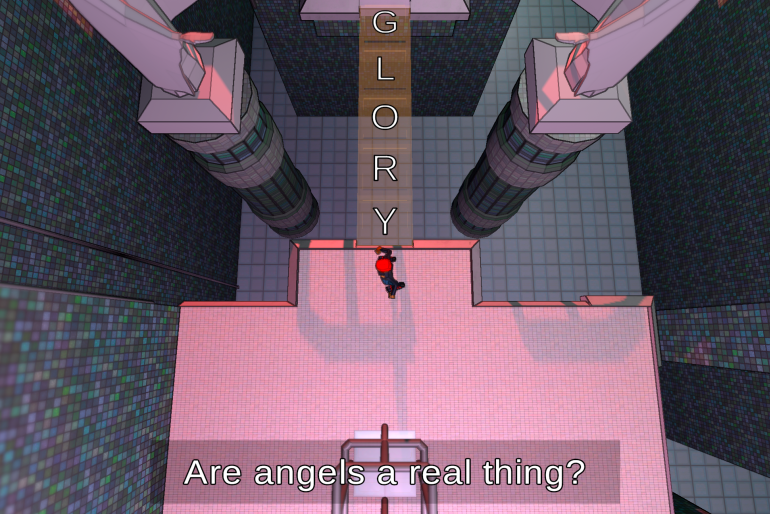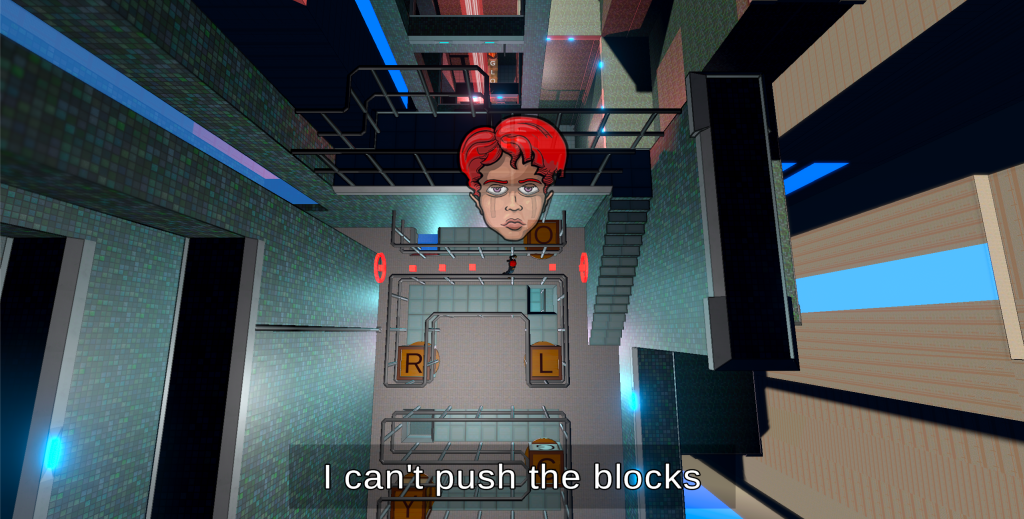I’m a big fan of player empathy. A ton of my level design process is me thinking hard about how the player will react to different situations.
But with the help of our awesome alpha playtesters, I’ve got a better tool at my disposal – recorded videos of them playing through the levels. So I don’t have to think abstractly about how a player reacts to my levels. I just watch the videos and see it for myself.
This helps alleviate an old problem in interactive storytelling – keeping the player-controlled character relatable. There’s an uncanny valley to cross between full control and no control of a character. At one extreme, in a game like Portal, your character, Chell, expresses nothing other than the actions you give her. At the other extreme, watching a movie like The Matrix, you know you have zero control over Neo while you watch the movie. (I mean you can try twiddling the game controller and see if you can get him to do stuff.) Neo can be something completely different than you without it bothering you.
So my theory for making good dialogue for a player-controlled character in a linear-story game is this:
- Establish the character quickly, so the player has some idea of what role they are playing.
- Don’t pretend the character will or should express everything that player controlling them would want to express.
- When there are good opportunities to express through the character what the player is likely thinking, take them.
This last point is where watching reactions from playtesters helps.
On a particular level in the game, Glory Heights, half of the playtesters expressed a moment of confusion about a game mechanic. They arrived at the top of a building and were somewhat surprised that they could push a block element through rails, which function as obstacles. Since the playtesters are a bit on the elite puzzle-solving side, I imagine less hardcore players could have more trouble than they did.
I added the following dialogue for the player-controlled character, Emm, when she arrives at this location:
Emm: (sigh)
Emm: I can’t push the blocks, when they’re behind rails?
(pause)
Emm: Right?
The “right?” on the end cajoles the player to try it out. Once the player successfully pushes a block, Emm continues:
Emm: I *can* push the blocks when they’re behind rails.
Emm: Okay, this should be super-easy.
The “this should be super-easy” remark is the setup for a small joke. This particular puzzle had all the playtesters trying and discarding their first idea, and then cranking through what turns out to be a tough, little level with no quick solution. When the player solves the puzzle, Emm says:
Emm: What a pain in the ass.
…and it aligns with what most players are going to be feeling at that point – a little fatigued, but satisfied to make it through. The acknowledgment that it was tough should also give them a sense that the game won’t push tedious and unfair challenges on them.
You can see a demo of these interactions in the video below. It’s from my Twitch stream.
I’m 50% done with story edits to levels today. Still comfortably on track for the January 1st release.
| The Godkiller – Chapter 1 is a 3D puzzle-solving adventure game available for Windows and Mac on Steam! |


